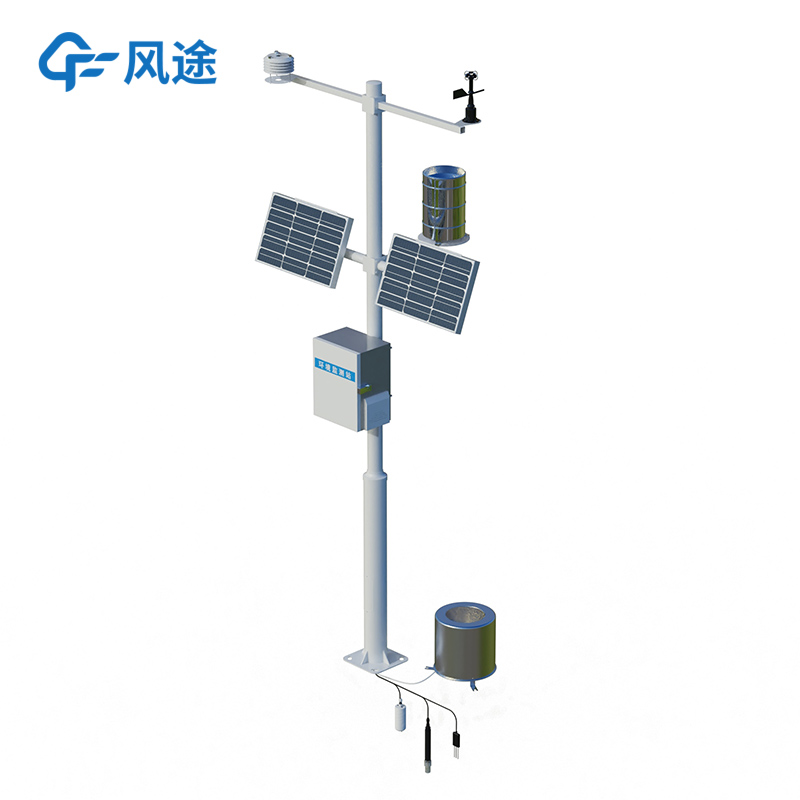Shandong Fengtu IOT Technology Co., Ltd
Sales Manager:Ms. Emily Wang
Cel,Whatsapp,Wechat:+86 15898932201
Email:info@fengtutec.com
Add:No. 155 Optoelectronic Industry Accelerator, Gaoxin District, Weifang, Shandong, China

Sales Manager:Ms. Emily Wang
Cel,Whatsapp,Wechat:+86 15898932201
Email:info@fengtutec.com
Add:No. 155 Optoelectronic Industry Accelerator, Gaoxin District, Weifang, Shandong, China
time:2025-10-23 09:21:38 source:Weather Station viewed:134 time
In the field of modern agriculture, with the popularization of precision agriculture and smart agriculture concepts, there is an increasing demand for quantitative management and scientific decision-making in agricultural production environments. Agrometeorological stations have emerged as automated monitoring devices deployed in farm fields to continuously and real-time collect various environmental and meteorological data closely related to crop growth.
These instruments can measure multiple meteorological parameters, typically including:
Air Temperature and Humidity: Reflecting the basic thermal and moisture conditions for crop growth.
Wind Speed and Direction: Affecting pollen transmission, pesticide spraying effectiveness, and crop transpiration.
Rainfall: Providing direct precipitation data for irrigation management and drought/flood assessment.
Solar Radiation: Measuring the amount of energy available for plant photosynthesis.
Soil Temperature and Moisture: Directly monitoring the environmental conditions in the crop root zone.
This real-time data is transmitted via wireless networks to agricultural management platforms, providing decision-making basis for farmers, cooperatives, and agricultural research institutions. It supports specific agricultural activities such as irrigation, fertilization, pest control, and severe weather warning, thereby improving resource utilization efficiency and agricultural production benefits.
How to Choose Agrometeorological Stations?
First, determine which meteorological elements you must monitor. For example, if irrigation and soil moisture dynamics are your primary concerns, then equipment like multi-parameter soil moisture and meteorological monitors that can measure soil moisture at different depths would be more suitable. For scientific research purposes, you may need models that can measure specialized parameters such as photosynthetically active radiation and net radiation.
Pay attention to power supply and data transmission methods. Agricultural meteorological stations are often deployed in remote fields, so power supply and data transmission are crucial. Most products on the market now use solar panels combined with storage batteries to achieve long-term unattended monitoring. For data transmission, GPRS wireless transmission is the mainstream method, facilitating remote data upload to cloud platforms or servers.
If there is a possibility of adding monitoring elements in the future, choose products with rich sensor interfaces and expansion capabilities. Understand the installation difficulty and waterproof/dustproof rating of the equipment, as these relate to its stability and service life in harsh field environments.

Portable Weather Station is a highly integrated, portable, and rapidly deployable automatic weather observation device. It incorporates sensors, a data logger, a power supply system, and a communication module into a compact housing or mast. Its core features can be summarized as "portable, rap...
In the field of meteorology, visibility is a crucial observation indicator, usually accurately represented by the meteorological optical range. In the aviation field, the precise measurement of the Visibility detector can ensure the safety of aircraft takeoffs and landings; in the transportation fie...
Low-visibility weather conditions such as fog, haze, precipitation, and sandstorms not only cause great inconvenience to travel but also frequently trigger major accidents, leading to severe casualties and economic losses. However, the existing Doppler weather radars in meteorological and environmen...
In today's booming tourism industry, the installation of scenic weather stations in scenic areas has become a crucial measure to enhance the level of operation management and the tourist experience.From the perspective of enhancing the tourist experience, the weather warning function of the scen...